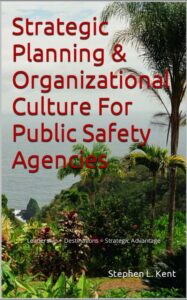
As I noted in the first installment of this opinion piece, I recently completed an online course provided by Harvard University entitled, “Introduction to Family Engagement in Education.”
My initial intent was to continue learning as much as possible about how our family could improve our effectiveness as coaches for our son as he negotiates a different field upon which fifth grade will be accomplished: online, at home.
The Harvard course – outlining the importance of maximizing student success by surrounding them with a multi-faceted, supportive culture where everyone contributes to the learning experience – along our home story became inspirational sparks for this article.
So, What Are You Going To Do With This New Insight?
As I proceeded through the Harvard course instructors and presenters consistently stressed that I consider, “How does the course information apply to your own experience and the future of your work?”
As they should, they provoked me to think: ‘How do we maximize employee success by surrounding them with a multi-faceted, supportive culture where everyone contributes to the learning experience?’ It is a great question, and I believe there are reasonable solutions yet there are many, many obstacles.
I have conducted leadership, supervisory and management training for law enforcement agencies; fire departments; city, county, State and Federal government organizations; not-for-profits; and the private sector throughout the United States for more than forty years. I have worked with the tiny, the medium-sized, the enormous and complex. I have worked with the abysmal, the sort-of-good, the doing-fine and the stellar. I have worked with the growing, the stagnant and the now defunct.
Anecdotally there are commonalities – and a few, distinct differences. Chief among those differences which, in my experience, contributes directly to organizational effectiveness, growth, viability and sustainability is that the more successful know and practice the difference between “training” and “learning.”
“Training” versus “Learning”
I maintain that each member of any team has an inescapable, personal obligation to have a positive impact on the fabric of the culture or their organization. Additionally, I maintain that people don’t leave jobs; they leave supervisors. People don’t leave careers; they leave cultures.
Why? Toxicity is tolerated and its symptoms are ignored … tyrannical supervisors and co-workers; the failure to involve them in decision making; failure to keep them informed; failure to deal with those who choose not to perform; failure to show them how their daily tasks are tied to the organization’s mission; abysmal delegation techniques; poor or otherwise confusing communication; failure to provide two-way feedback on achievements; measuring stupid stuff; creating dynamics wherein organizations become afraid of their own employees; and the failure to make certain that they are clear about their decision-making authorities on everything for which they have accepted accountability.
The fact that the Federal government, State legislatures and many Law Enforcement agencies have found it necessary to legislate (an inconsistent) number of minimum hours of ongoing, annual “training” as mandatory goes a long way to explain the conundrum in which many public safety organizations – and their financial supporters/taxpayers – find themselves. (Remember my rule: If you have two systems you have no system.)
I have learned that there are clear implications to an organizational culture that must adhere to such requirements as: “minimal” … “mandatory” … “forced” … “not optional.”
Too many organizations apparently do not even try to mandate “learning” … most do not even expect it.
The best they can do is legislate requirements for “training” and participation tends to be measured merely in short-sighted ways such as hours spent in training rather than any expectation or obligation whatsoever to one’s own team to apply the material that was presented. State-level Peace Officer Standards & Training (POST) organizations are notorious for such short-sightedness – measuring “attendance” rather than asking, “Did anyone actually learn anything?”
Moreover, there is little, if any, expectation to pass the training content on to other employees when people return to the workplace. What could have been a demonstration of a return-on-investment of The People’s money is relegated to a mere expense.
It has been my experience that much of the so-called “training” that is required of law enforcement personnel is centered more around protecting the agency and its insurance carrier in reaction to successful lawsuits than it is about any altruistic, holistic view of or appreciation for employees or the community. It is hind-sighted risk management rather than forward-thinking improvement. The attitude I have frequently encountered is, “We’re sending people to (sexual harassment, sensitivity … fill in the blanks) training because we don’t want to get sued. Bobby did that and we got sued and we don’t want to get sued again for that, so everyone is going to get ‘re-trained’.” The concept of creating a learning organization within the internal culture – of introducing effective ethics as a way of doing business – is lost upon too many.
(I have always thought that conducting “ethics” training for people in Law Enforcement after we’ve given them a commission and a gun is the wrong order of operations.)
In addition, the fact that “training” had to/must be legislated, should tell us about the attitude of altogether too many employees in the industry – especially what those individuals may be telling us about the importance they truly place upon continuing education and personal growth.
I have always deemed such choices as short-sighted – for individuals, teams, agencies, legislative bodies and taxpayers.
I believe that altogether too many things don’t get done in America because too many people (who should know better) are lazy, unimaginative, fearful or selfish … or some combination of those four growth-limiting choices.
A case in point: A decade or so ago a Sheriff’s Office hired me to assist them through the Strategic Planning process along with leadership and team building within the organization. At one point I had a meeting with the Command Team to touch base on their progress and to discuss the next steps. The Sheriff was not invited to, nor aware of that meeting because his presence simply wasn’t necessary at that point.
That morning I was dragging my easel and flip charts and projector down the stairs (I know, old school, right?). The Sheriff’s personal office was at the bottom of those stairs. As I reached the last step, he bolted out of his office on his way somewhere, crashing into me and all my gear.
He stepped back, looked me over to assess any damage and said, “Oh, crap! You’re going to make me think aren’t you!?”
“Yes, Sir,” I responded, “That’s what you hired me for.”
A Trained Workforce versus A Learning Organization.
I have learned from my experience with law enforcement agencies of all sizes that a lot of training – other than specific, hands-on tactical issues for commissioned officers – tends to be passively promoted, passively attended, passively embraced and summarily forgotten by many.
Training tends to be isolated … compartmentalized … passive. Sit and get. (I frequently hear, “Just show me how to fill out the form so we don’t get sued and do it quickly because I have better things to do than this.”) Make a few notes or not. Keep it to yourself afterwards. Check the box that you were in, near or knew of the room where the instructor was. Make sure the training file is updated with date, topic and place. I’ve got mine. You get yours. Go back to the old ways of doing things regardless of new information that proves those old ways are not effective. After all, “a day in training is better than a day at work, right?”
As one veteran commissioned employee told me: “Anything that isn’t about shooting guns, how to win a fight, driving fast or how not to get sued isn’t really training. It’s just unnecessary fluff.”
It occurs to me that in order for lifelong learning to become part of any culture, we must shift where individuals get their emotional payoff.
In addition, when circling back with people who have completed leadership academies I have provided, I have learned that there is a high probability that when some return to their agencies, the principles, concepts and guidance to which they were exposed are not necessarily welcomed. In fact, for altogether too many of them, ideas new to their parent agency are met with the equivalent of, “Who gave the baby those drugs and that sword?” It is in this manner that too much training is simply deflected, disregarded and never makes it into the fabric of organizational culture.
I conclude that in order for lifelong learning to become part of any culture that very culture must change where it gets its own emotional payoff. Perhaps that would require asking different questions during the selection process.
Training tends to be viewed as an “expense” – a mere cost of doing business rather than as an “investment” in employees, the team, the agency and the community. It’s just “something we’ve got to do because, you know, unfunded mandates and POST requirements …”
Likewise, policies tend to be linear, punitive, reactionary and require lockstep adherence from employees. I do not fear many things. I was raised in the country; I was a soldier – both as enlisted and as a commissioned officer and I helped raise a houseful of teenagers. So, most things don’t scare me.
Yet, the one thing that absolutely scares me in life are “true believers.” True believers may consist of ISIS, the Taliban, or a few of my bat-crazy relatives out there in the world. The thing that is chilling about “true believers” is their ethos that, unless you believe as they believe, they can kill you and justify the murder.
I am convinced that “policy worshippers” in Law Enforcement are a form of “true believerism.” Policy worshippers don’t care about innovation or creativity. They don’t care about individuality. If possible, they would make a list of every conceivable human behavior and turn it into a “gotcha” list. (They also exempt themselves from the list because they are, at their core, hypocrites.)
I have noted elsewhere that organizations who hire actual adults require much fewer policies and would spend less on defense attorneys.
I have learned that too many policies get into policy manuals because someone knew their behavior was wrong and did it anyway. Rather than deal with the offender one-on-one, so-called “supervisors” and “administrators” write blanket policies and punish everyone. (The same folks who try to whine to me that they have recruiting and retention problems.) I consider such choices particularly glaring forms of personal cowardice in my world – and in no way befitting those who would be “leaders.”
Many go the way of sending offenders to “more training,” regardless of whether “learning” occurs. Such training is likely to be perceived as punishment for past sins rather than an opportunity for personal growth and fulfillment. Small wonder that employees do not always fully have a sense of conviction – of personal buy-in and ownership – about policies and procedures. It is an even smaller wonder that too many Law Enforcement agencies have acute problems with recruiting and retention of qualified personnel; spend inordinate amounts of time reacting to peripheral demands of guilds and unions attempting end-runs around or setting up a shadow “chain-of-command” in conflict with their own agency; and, despite their best efforts, do little to contribute to employee safety in the workplace nor reduce unnecessary financial exposure to taxpayers.
Or, as the supervisor of an obstreperous, repeat offender employee once told me, “If I send that guy to sexual harassment or racial sensitivity training, all he’s going to do is find some new techniques to avoid getting caught doing what he’s done and is always going to do.”
Such a statement always makes me wonder, ‘What does it take to get fired around here?’
Learning requires individuals to take an emotional risk; to allow their personal identity and their beliefs to be vulnerable to change. Learning requires individuals to actively engage their experiences, critical thinking skills, a sense of enthusiasm about self-improvement and to embrace a personal commitment to go back to their organizations and inspire others with what they have learned. Learning allows the ancient notion of lock-step policy & procedure manuals to go by the wayside – replaced by cultural values within the organization.
Learning must be absorbed. There must be personal commitment behind it.
If reading is a measure of a lifelong commitment to learning, there are some disturbing indicators that a lot of people simply don’t care. I need no more proof than to learn that in 2019 nearly 30% of American adults did not read even one book. (https://www.pewresearch.org/fact-tank/2019/09/26/who-doesnt-read-books-in-america/)
Over the past forty years I have modified my approach to presenting and securing buy-in from students and clients because I have learned to learn from them.
(NOTE: the remainder of the article is not included because it is incomplete.
Go here to choose, schedule and pay for an Online, Live Short-Course:
Go here to register and pay for an Online, Live Leadership Academy:
Classroom Instruction
In-person classroom participation.
Academy Training Online, Live
This category includes all online, live academies: The Executive Academy (40 hours); The Sergeants' Academy (40 hours); The Leadership Academy (15 hours)
If you have questions or need assistance, use the red smiley face at bottom right, or email me at [email protected] or call 541.806.1502.




